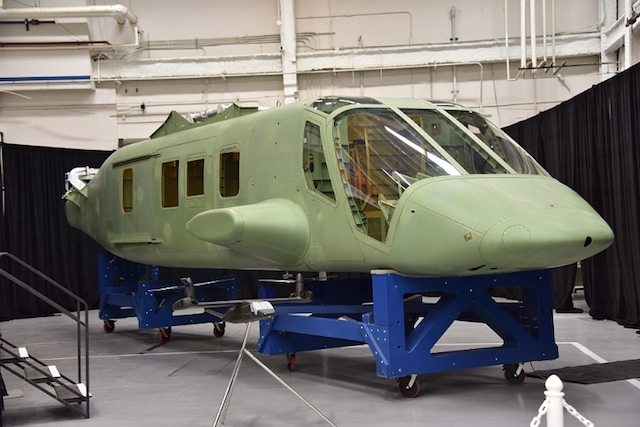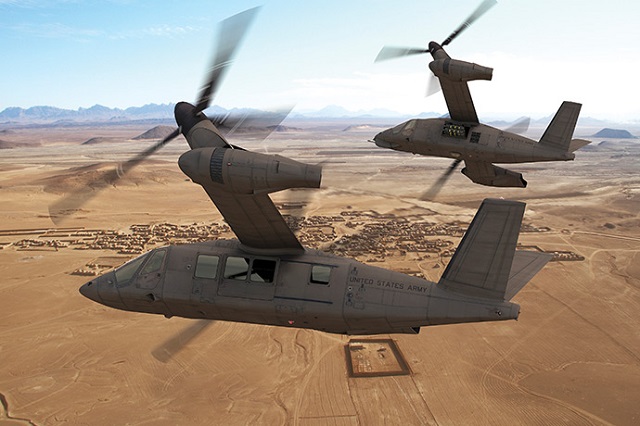Spirit AeroSystems rolled out the first fuselage for the Bell Helicopter V-280 tiltrotor demonstrator on 22 September, revealing much about how the team hopes to make tiltrotor technology affordable for widespread military application.
The V-280 features several design innovations as a generational improvement on the tiltrotor technology used with the Bell Boeing V-22 Osprey, including a potential breakthrough with a straight wing that replaces the dihedral and swept swing on the V-22.
But Bell chief executive John Garrison tells Flightglobal in an interview that the most critical breakthrough on the V-280 is also manufacturing process intended to dramatically lower the price point and operating cost of tiltrotor technology.
“That’s where the new technology is – manufacturing technology and assembly technology,” Garrison says, “because we know we know how a tiltrotor works. We’ve got 50 years of doing tiltrotor. Our opportunity and challenge is to bring that capability into a price point and a target cost that makes sense for [the US Department of Defense]”.

Photo: Spirit AeroSystems
A tiltrotor can fly twice as fast as most conventional helicopters, but usually for a significantly higher cost. The US Army plans to eventually replace its entire fleet of Boeing AH-64 Apaches and Sikorsky UH-60 Black Hawks with a new aircraft, but has traditionally balked at the cost premium that comes with tiltrotor-like speed.
Bell has set a price point and cost target for the V-280 that Garrison compares to a heavily-equipped AH-64E Apache Longbow or an MH-60M configured for the 160th Special Operations Aviation Regiment.
Affordability is a key reason that Bell selected Spirit AeroSystems to supply the V-280 fuselage in July 2013. After spinning off from Boeing in 2005, Spirit AeroSystems’ sprawling plant in Wichita now supplies advanced composite structures for large commercial widebody programmes, such as the Boeing 787 and Airbus A350, with affordability as a key criteria.
For the V-280, Spirit AeroSpace deployed a trademarked “Exact” rapid prototyping process. It emphasises machining to extremely tight tolerances in fabrication, avoiding the need for expensive and labourious tooling jigs. The V-280 itself was displayed at the roll-out on a wooden cradle costing roughly $2,000, which is typical of the Exact process.

Photo: Bell Helicopter
The V-280 programme still has a lot of work to do. The army is staging a two-year fly-off between the V-280 and the SB-1 starting in September 2017. The Spirit AeroSystems fuselage will be shipped to Bell’s plant in Amarillo, where it will be mated with vertical tails supplied by GKN Aerospace, the new wing and a pair of overhauled GE Aviation T64 engines.
Garrison noted that the project had some challenges designing the transmission. But the company now expects to take delivery of the aircraft’s gearboxes and transmission system around the end of the year.
Source: FlightGlobal.com



















